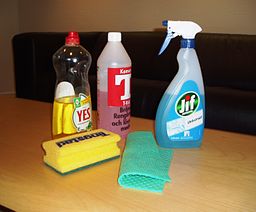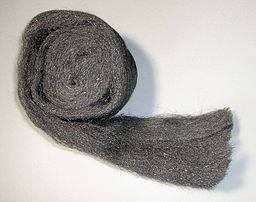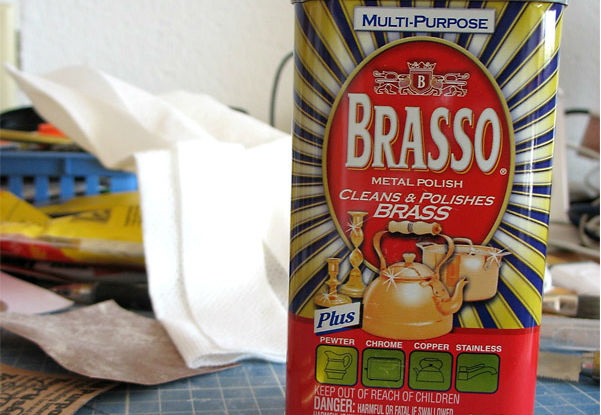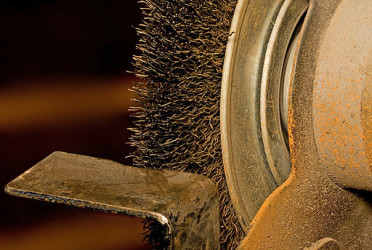Monarch Metal How-To: Cleaning & Polishing Brass
Since unfinished solid brass tarnishes when it’s exposed to the carbon and sulfur dioxides in the air, it needs to be properly and regularly maintained for the span of its lifetime. Without regular cleaning and polishing, brass pieces will become difficult to restore, costing you more time and energy when you actually do decide to give them a makeover.
In this guide, we’ll go over a few methods you can use for cleaning and polishing brass as well as suggestions for getting the best results.
Part I: Cleaning
Keep in mind that anytime you clean brass, you’re essentially removing some of its surface and patina, so it’s important to approach this process with care even when using very mild chemicals.
Here are some cleaning agents you can use to give your brass a good clean-up:
- Solvents. Solvents like water are typically used in combination with other agents, such as acids and detergents. They facilitate stain removal by causing these other cleaning agents to chemically react and quickly dissolve dirt and oil.
For residue that won’t dissolve in water, you can try organic solvents like acetone, mineral spirits, and naphtha. But be sure to use these with caution, as they are flammable.
Mild Detergents. Great for the beginning stages of cleaning, mild detergents contain surfactants or surface-active agents that, when used with water, make tough residue painless to remove. Surfactants reduce the surface tension of the water, effectively loosening up dirt and grease.
- Acidic Cleaners. When cleaning brass, acidic cleaners like vinegar (acetic acid) and lemon juice (citric acid) work best. These help dissolve hard water deposits and make the tarnish caused by them much easier to remove.
Mild Abrasives. Abrasives like nylon coated sponges and fine steel wools typically work well on tough stains. They’re often used to clean pots, pans, and the interiors of appliances (like an oven), but you can use them on any brass piece. When using mild abrasives, be mindful of the fact that excessive scrubbing will likely scratch the surface of the brass.
- Commercial Cleaners. Commercial cleaners, which you can find at online stores like Jax Chemicals and most hardware stores, are useful if you want to get a job done more quickly. Oftentimes, these products take care of cleaning and polishing all at once.
Many of the cleaning agents listed above can be applied with a soft cloth (microfiber is recommended). When cleaning brass, be sure to use rubber or latex gloves to protect your skin from harsh chemicals.
Part II: Polishing
Solid brass should be polished with some regularity to maintain its luster. And if you’re working with architectural metals and trims, you’ll want to do your best to achieve as bright a finish as possible, so having a handle on polishing techniques is essential.
You’ll need a pair of cotton gloves when handling pre-polished brass to keep fingerprints and skin oils from smudging the piece. With that in mind, here are a couple of polishing tools that work well:
Liquid Polishes. Liquid polishes, like the ever-popular Brasso, contain an extremely fine abrasive that’s mixed with a mild solvent, eliminating the need for buffing. They’re often used to smooth over scratches and other imperfections as well as give the brass a radiant shine.
- Solid Polishes. Solid polishes that are cream or paste based also work well. Products like Simichrome and BlueMagic are non-abrasives that provide long-lasting protective coating for brass and other metals.
- Wadding. Cotton wadding, which is found in products like Nevr Dull, give brass a nice polish when used in conjunction with a cleaning solution. One advantage to using this is that it won’t leave any residue.
Power Tools. If time is of the essence, then power tools are most definitely your best option. A Sandblaster is especially efficient at producing a very fine polished finish. Fill its canister with light sand grit and you should be good to go.
Another quick and efficient option is a grinding wheel. These, in combination with a polishing compound, make brass look brand new. All you need to do is switch out abrasive wheels for cotton ones and apply the compound.
Rouge and whiting are the most appropriate compounds for the buffing stage, while pumice and tripoli are the best for polishing. You should be using a separate wheel for each compound, or else you risk counteracting the compound’s effects.
Like the cleaning process, buffing and polishing also strip a thin layer from the surface of the brass. So, even though brass should be maintained regularly, aggressive or excessive polishing should be avoided to maintain the integrity of the piece.





